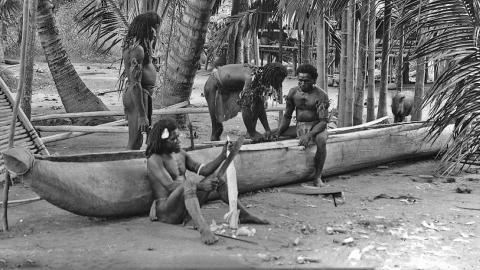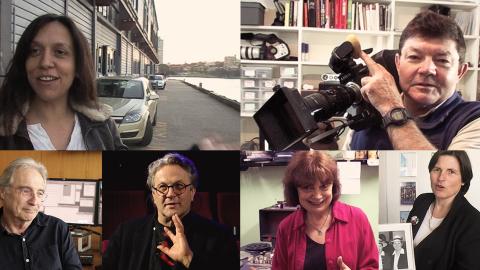
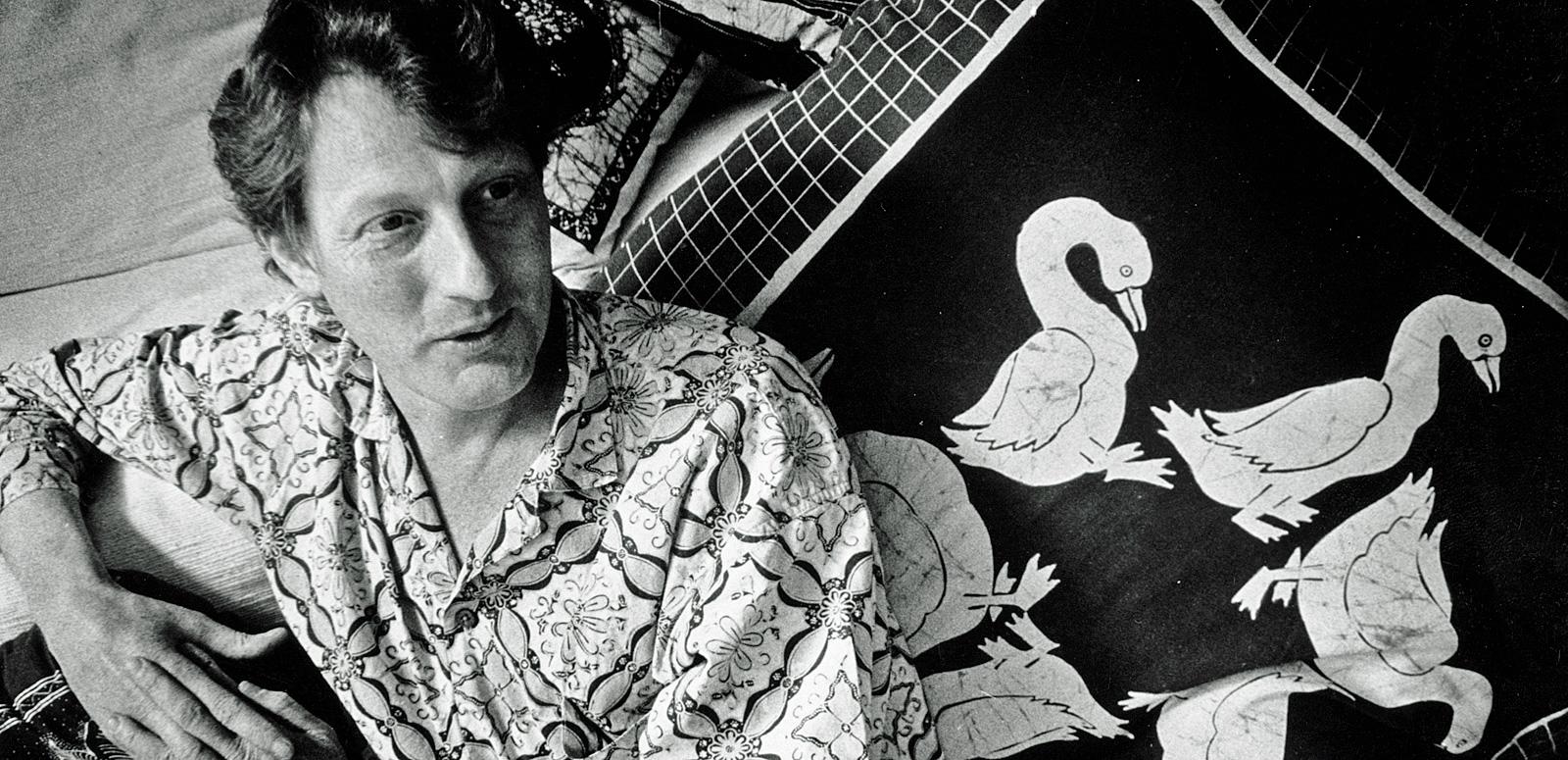
John Darling
John Darling: Bali Documentary Filmmaker
The NFSA recently acquired the personal papers and photographs of Australian documentary filmmaker John Darling (1946–2011), generously donated by his wife Sara Darling.
Window into Bali
Created and used during the research and filming of his many productions, the documents provide a rare, intimate look into the rituals, art, and traditions of Balinese people, at a time when the international tourism industry was in a period of exponential growth.
Bali is an island rich in culture and elaborate traditions and the papers, compiled over 40 years, include thousands of photographs, research notes and production information relating to Darling’s many documentaries. Together, they show his passion in bringing the stories of Bali and its people to the rest of the world.
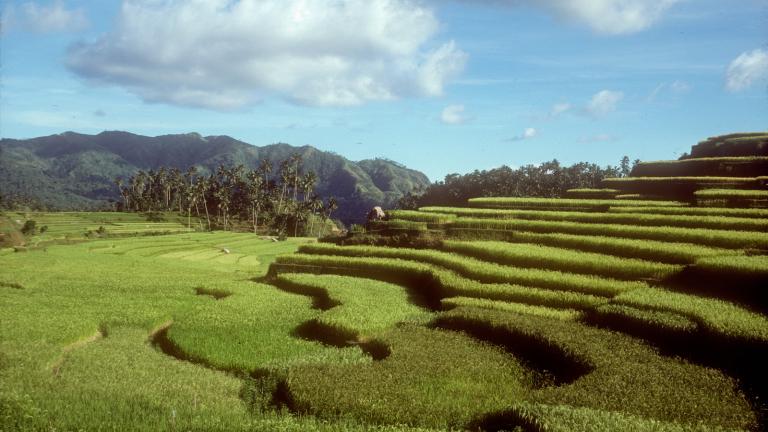
Balinese rice terraces from Bali Triptych (1987). Photographer: John Darling. Courtesy Sara Darling. NFSA title: 1587068.
Click image to expand.
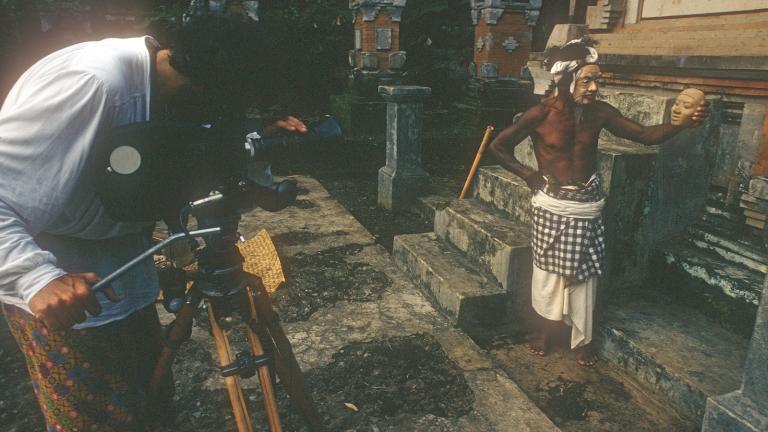
Co-director Lorne Blair filming Lempad's astral being for Lempad of Bali (1978). Photographer: Rio Helmi. Courtesy: Sara Darling. NFSA title: 1586629.
Click image to expand.
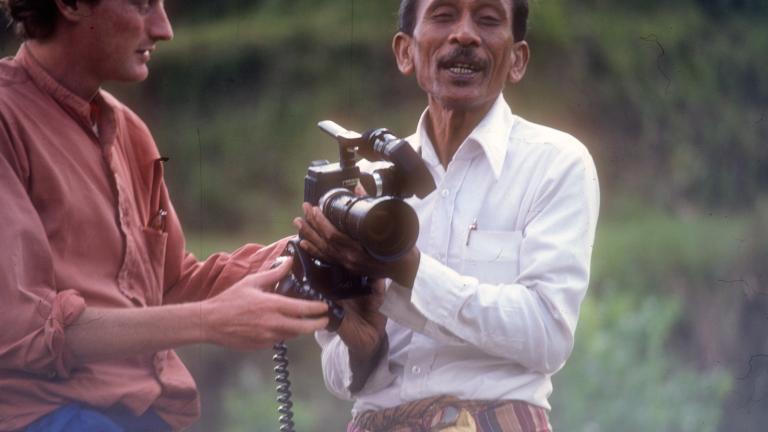
John Darling pictured with I Gusti Made Sumung, son of I Gusti Nyoman Lempad (1978). Photographer: Rio Helmi. Courtesy: Sara Darling. NFSA title: 1586629.
Click image to expand.

Bumper sticker distributed at the purification ceremony (Taur Agung) at the site of the Bali bombings, 15 November 2002. NFSA title: 1587026.
Click image to expand.
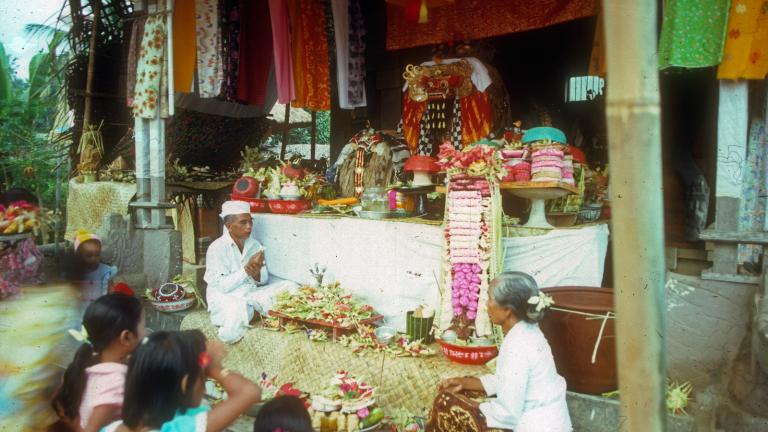
Scene from Lempad of Bali (1978) showing some colourful ceremonial offerings. Photographer: Rio Helmi. Courtesy Sara Darling. NFSA title: 1586629.
Click image to expand.
Bali Triptych
John Darling moved to Bali in 1969 and developed a rapport with its people and an affinity for their way of life. Of particular interest was their religious traditions and the changes to the Balinese society and economy that occurred as a result of the influx of tourists.
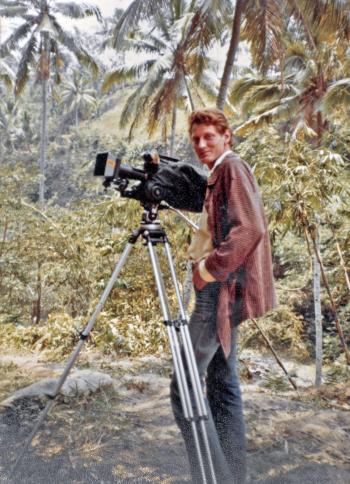
His first documentary, Lempad of Bali (1978) which he co-directed with Lorne Blair, explores the life and work of 116-year-old artist I Gusti Nyoman Lempad and his subsequent funeral, detailing the complex, Balinese funerary customs. This production won the Documentary Award at the Asian Film Festival in 1980.
Darling’s subsequent films formed his Bali Triptych (1987) series. Each hour-long episode – Between the Mountain and the Sea, The Path of the Soul and Demons and Deities – presents in vivid detail the history, culture and way of life of the Balinese people.
Darling worked with other filmmakers, including John Moyle for Bali Hash (1989), which juxtaposed the raucous nature of the Hash House Harriers gathering of international tourists and the peaceful Balinese ceremonies occurring at the same time.
This clip is from the episode Master of the Shadows, which Darling contributed to the TV series The Human Face of Indonesia (1984). The clip explores the impact of commercial pressures and the burgeoning tourist trade on traditional Balinese art:
Excerpt from The Human Face of Indonesia (1984), Episode 5: Master of the Shadows. Film Australia. NFSA title: 1470910.
He also contributed an episode, Five Faces of God, to the series Slow Boat From Surabaya (1988).
Darling filmed Below the Wind (1992) in northern Australia and Indonesia to explore the way of life of Indonesian fishing tribes, including the Sama-Bajau people. It showed the precarious nature of their existence, with ever-dwindling catches driving the Sama-Bajau further and further away from traditional fishing grounds. It also covered the history of their interactions with the people of Maningrida and their clashes with Australian border forces when they venture into Australian waters.
‘Grieving in two cultures’
In the direct aftermath of the horrific 2002 Bali bombings Darling released his final and most personal production, The Healing of Bali (2003). Despite suffering from a hereditary blood disease, he returned to Bali with his wife Sara, ten days after the bombings, remaining there for a year. He told Sara, ‘I’m grieving in two cultures’.
Working in a team with Sara – who played a vital role as co-producer, production manager, researcher and stills photographer – John recorded the aftermath of the bombings in the Balinese community. The Healing of Bali tells stories of volunteers and those badly injured, together with Balinese responses to the event, reflecting a range of religious beliefs – Hindu, Muslim and Christian. It received international acclaim for its tolerance and sensitivity.
John Darling’s legacy in Bali was aptly described by the words of a member of the royal family in Ubud, Tjokorda Gde Mahatma Putra Kerthyasa: ‘He didn’t choose an easy life in Bali, he chose a Balinese life. He is remembered by the people of Ubud as one of the few foreign “custodians” of Balinese culture who didn’t take but shared.’
The NFSA is proud to receive the John Darling collection and will continue to preserve and share his extraordinary work.
Main image: Portrait of John Darling with hands clasped, wearing batik shirt and leaning on cushions. Courtesy Sara Darling. Photographer unknown. NFSA title: 1584805.
The National Film and Sound Archive of Australia acknowledges Australia’s Aboriginal and Torres Strait Islander peoples as the Traditional Custodians of the land on which we work and live and gives respect to their Elders both past and present.
